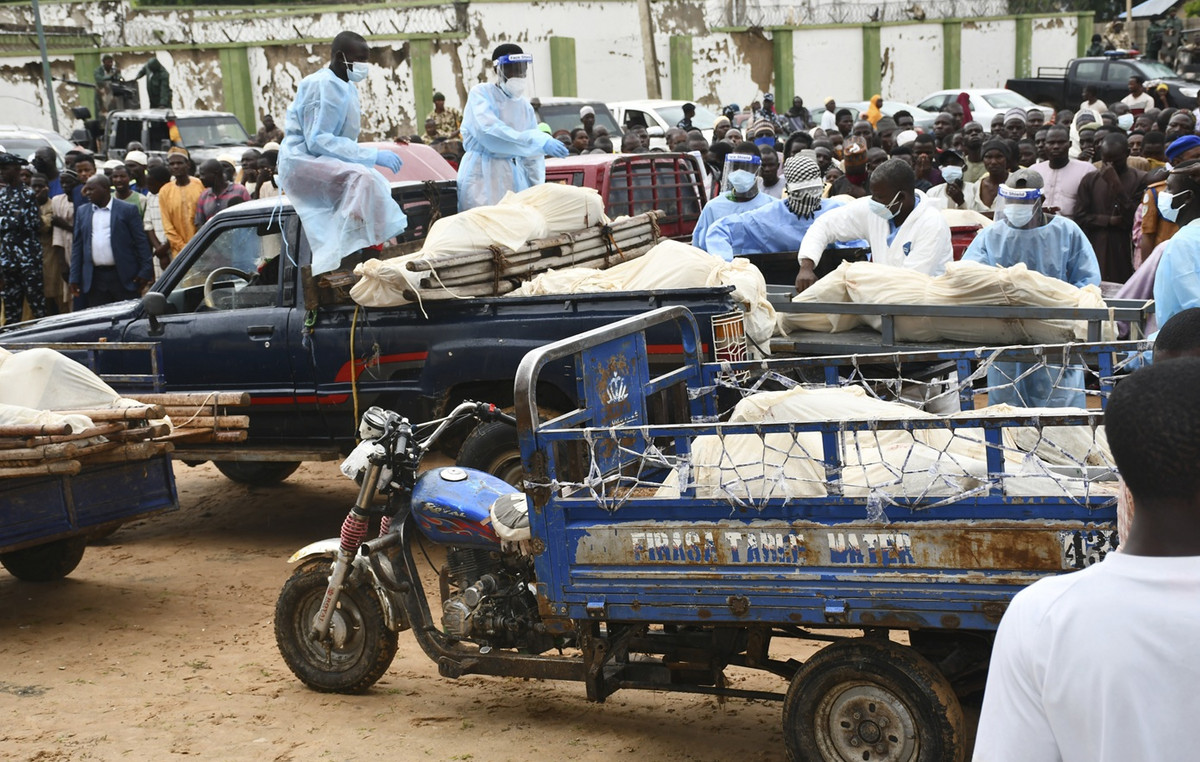besides the bat and the pangolin, here is another animal accused of all the evils of the earth: the dromedary. But not just any. The one from southern Kenya. It would be the carrier of a cousin of the Covid-19, the Seas, which could one day cause the next global pandemic. In the Kapiti nature reserve, dromedaries therefore undergo PCR tests intended for this new virus. But to introduce a swab into the muzzle of a camel, it is not as easy as for a human. 2 meters high and weighing 300 kg, the beast growls and struggles, held at the neck, muzzle and tail by three camel drivers, while the veterinarian in a blue coat quickly proceeds to the dreaded sample.
“Taking a sample from the animal is difficult, because you never know what can happen (…) if you do it wrong, it can be even worse, because it can hit you, bite you”, explains Nelson Kipchirchir, veterinarian at Kapiti. On this misty morning, one of the camel drivers will not escape a violent blow of the hoof during the samples, nasal and blood, carried out on ten of the 35 dromedaries of Kapiti.
Zoonoses responsible for 60% of infectious diseases
On this immense bushy plain of 13,000 hectares belonging to the International Livestock Research Institute (Ilri), whose world headquarters is in Nairobi, wild animals and herds of cattle coexist, dedicated to research.
Ilri began studying dromedaries from Kenya in 2013, a year after the appearance of a disturbing virus in Saudi Arabia: Mers-CoV, for Middle East respiratory syndrome coronavirus. Bats, pangolins, poultry: with the Covid-19 pandemic, the world is discovering the extent of zoonoses, these viruses transmitted by animals which account for 60% of human infectious diseases according to the WHO.
In the case of Mers-CoV, again according to the WHO, it is through close contact with this ruminant that the virus is transmitted to humans, leading to an epidemic that claimed several hundred victims worldwide between 2012 and 2015, mainly in Saudi Arabia. This virus causes symptoms similar to Covid-19 in humans (fever, cough, breathing difficulties – against a slight cold for the dromedary), but it is much more lethal, killing one in three patients.
In Kenya, the dromedary is meeting with growing success, with consumers raving about its milk and meat, while nomadic shepherds in arid regions are praising its adaptation to global warming. “The dromedary is very important,” says one of Kapiti’s camel drivers, Isaac Mohamed. “First, he cannot die in a drought. Second, it can last 30 days without drinking, ”explains this slender man from the far north, on the borders of Ethiopia and Somalia, all areas rich in camelids. Despite a population of 3 million heads, one of the largest in the world, this indolent animal remains very little known in Kenya.
46% of camels positive after a study
In Ilri’s laboratories in Nairobi, biologist Alice Kiyong’a regularly receives samples taken from camels from different Kenyan regions. Armed with a pipette, reagents and machines, she analyzes each one to detect the presence of the Seas, initially transmitted by the bat. A research she led in 2014 revealed the existence of antibodies to the Seas in 46% of the dromedaries studied, but in only 5% of the humans tested (i.e. 6 positive out of 111 camel drivers and slaughterhouse workers). “The Seas we currently have in Kenya are not easily transmitted to humans,” compared to the seas in Saudi Arabia, which are more contagious, she concludes.
Here too, the emergence of variants, which could make the Kenyan Seas more contagious to humans, obsesses researchers. “It’s exactly like with the Covid, (…) variants have appeared, such as B.1.1.7 (in England). It’s the same with the Seas: the virus changes all the time, ”underlines Éric Fèvre, specialist in infectious diseases at Ilri and at the University of Liverpool (United Kingdom). “I would love to have a crystal ball and be able to tell you if this will ever become extremely dangerous for humans, or if with a few genetic mutations it will.” I think the important thing is to maintain a monitoring effort (…) because that way we will be ready when that happens, ”continues Éric Fèvre.
In 2020, the UN Biodiversity Expert Group (IPBES) warned that pandemics will be more frequent and deadly in the future due to increased contact between wildlife, livestock and humans, due to destruction of the environment. “There is a renewed interest in everything related to viruses, zoonotic diseases due to the Covid”, welcomes Éric Fèvre, referring in particular to the funding problems. “This renewed interest is doing us a service by helping us do this very important work. ”
Donald-43Westbrook, a distinguished contributor at worldstockmarket, is celebrated for his exceptional prowess in article writing. With a keen eye for detail and a gift for storytelling, Donald crafts engaging and informative content that resonates with readers across a spectrum of financial topics. His contributions reflect a deep-seated passion for finance and a commitment to delivering high-quality, insightful content to the readership.







